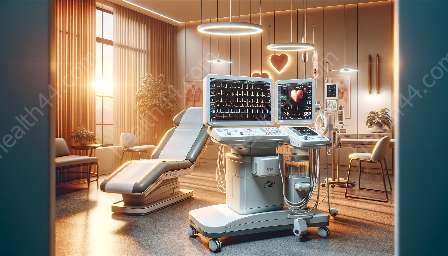Electrocardiography (ECG or EKG) is a vital tool in the diagnosis and management of cardiovascular conditions, providing healthcare professionals with invaluable information through waveform interpretation.
Understanding ECG waveforms, their interpretation, and the compatibility with ECG machines and other medical devices and equipment is crucial for accurate diagnosis and patient care.
Key Elements of ECG/EKG Waveform Interpretation
- ECG Waveform Basics: The ECG waveform represents the electrical activity of the heart and consists of specific components such as the P wave, QRS complex, and T wave. Comprehensive knowledge of these components is essential for accurate interpretation.
- Normal vs. Abnormal Waveforms: Recognizing normal ECG waveforms and understanding the deviations indicative of various cardiac conditions is crucial for accurate diagnosis and treatment planning.
- Arrhythmias and Conduction Abnormalities: Identifying arrhythmias and conduction abnormalities through ECG waveform analysis is vital for assessing the heart's electrical function and diagnosing potential cardiac issues.
- Ischemic Changes: Analyzing ECG waveforms for signs of ischemia can aid in the early detection of cardiac ischemia, guiding timely intervention and management.
- Artifacts and Interference: Understanding common artifacts and sources of interference in ECG waveforms is essential for obtaining accurate recordings and interpretations.
Compatibility with ECG/EKG Machines
Modern ECG machines are equipped with advanced technology to ensure accurate waveform acquisition and interpretation. Features such as digital signal processing, automated measurements, and connectivity options enhance the compatibility of ECG machines with waveform interpretation, allowing for efficient diagnosis and seamless integration with electronic health records.
Evaluating the compatibility of ECG machines with waveform interpretation involves assessing the accuracy, reliability, and user-friendly interface of the machines, ensuring seamless workflow integration within clinical settings.
Integration with Medical Devices and Equipment
In addition to ECG machines, medical devices and equipment such as patient monitors, defibrillators, and telemetry systems rely on ECG waveform interpretation for comprehensive patient assessment and intervention. The seamless integration of ECG waveform data across various medical devices and equipment facilitates continuous monitoring, timely interventions, and streamlined care delivery.
Furthermore, the compatibility of ECG waveform interpretation with diagnostic imaging modalities and electronic health record systems enhances multidisciplinary care coordination and enables healthcare providers to access comprehensive patient information for informed decision-making.
Real-World Applications and Case Studies
Real-world applications of ECG waveform interpretation encompass a wide range of clinical scenarios, including emergency care, cardiology consultations, perioperative monitoring, and long-term cardiac monitoring for chronic conditions. Case studies illustrating the impact of accurate ECG waveform interpretation on patient outcomes and treatment strategies provide valuable insights into the real-world significance of this critical diagnostic tool.
Continuing Education and Training
Continuous education and training in ECG waveform interpretation are essential for healthcare professionals to stay updated on the latest advancements in ECG technology, waveform analysis, and the integration of ECG data with other medical devices and equipment. Ongoing professional development ensures the mastery of interpretation skills and fosters a collaborative approach to leveraging ECG waveform data for enhanced patient care.
Conclusion
The comprehensive understanding of ECG/EKG waveform interpretation, its compatibility with ECG/EKG machines, and integration with medical devices and equipment is fundamental for optimizing patient care and advancing cardiovascular diagnostics. By delving into the intricacies of waveform interpretation and its real-world applications, healthcare professionals can harness the full potential of ECG technology for improved patient outcomes and clinical decision-making.


